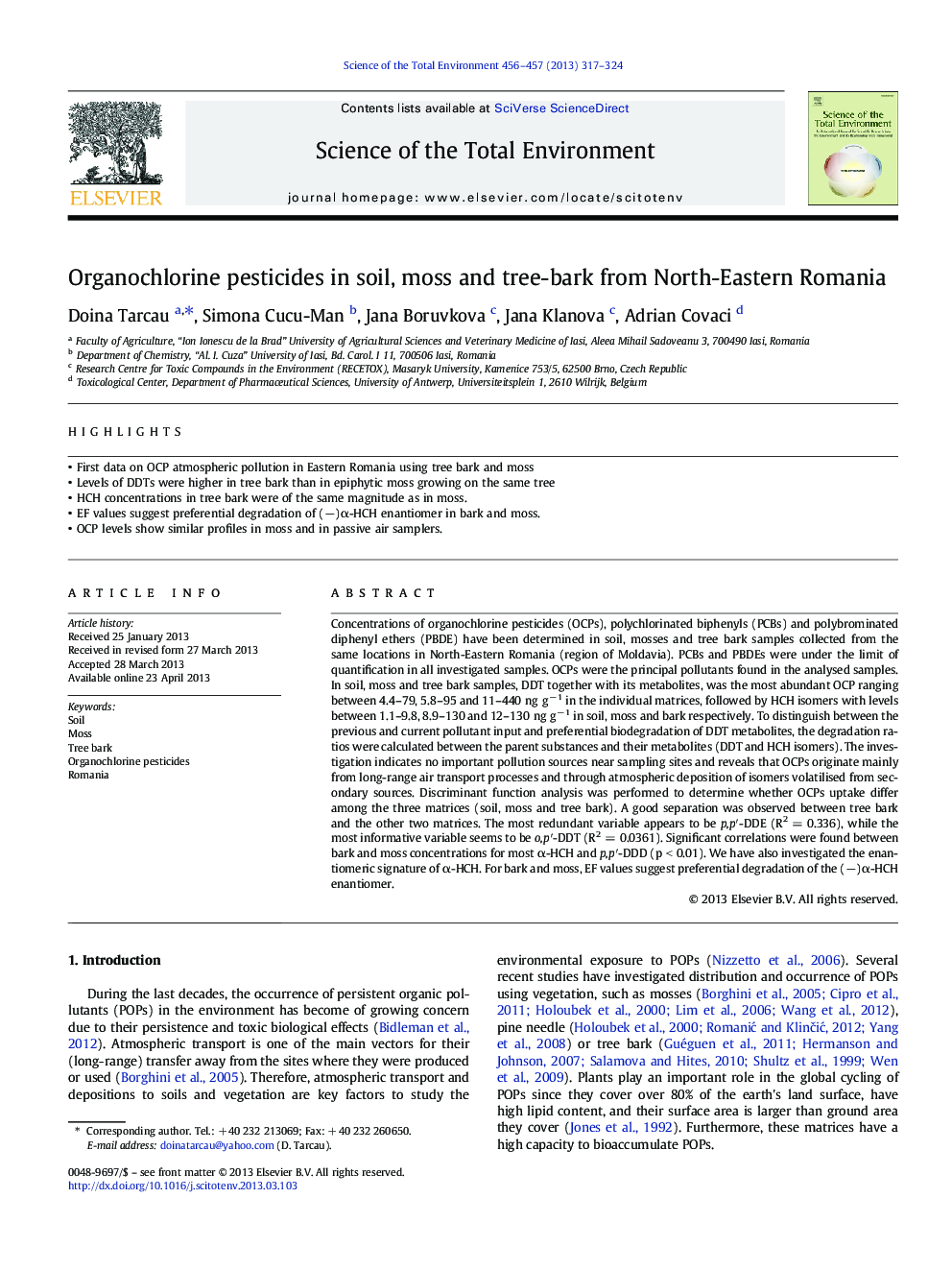| Article ID | Journal | Published Year | Pages | File Type |
|---|---|---|---|---|
| 4428821 | Science of The Total Environment | 2013 | 8 Pages |
•First data on OCP atmospheric pollution in Eastern Romania using tree bark and moss•Levels of DDTs were higher in tree bark than in epiphytic moss growing on the same tree•HCH concentrations in tree bark were of the same magnitude as in moss.•EF values suggest preferential degradation of (−)α-HCH enantiomer in bark and moss.•OCP levels show similar profiles in moss and in passive air samplers.
Concentrations of organochlorine pesticides (OCPs), polychlorinated biphenyls (PCBs) and polybrominated diphenyl ethers (PBDE) have been determined in soil, mosses and tree bark samples collected from the same locations in North-Eastern Romania (region of Moldavia). PCBs and PBDEs were under the limit of quantification in all investigated samples. OCPs were the principal pollutants found in the analysed samples. In soil, moss and tree bark samples, DDT together with its metabolites, was the most abundant OCP ranging between 4.4–79, 5.8–95 and 11–440 ng g− 1 in the individual matrices, followed by HCH isomers with levels between 1.1–9.8, 8.9–130 and 12–130 ng g− 1 in soil, moss and bark respectively. To distinguish between the previous and current pollutant input and preferential biodegradation of DDT metabolites, the degradation ratios were calculated between the parent substances and their metabolites (DDT and HCH isomers). The investigation indicates no important pollution sources near sampling sites and reveals that OCPs originate mainly from long-range air transport processes and through atmospheric deposition of isomers volatilised from secondary sources. Discriminant function analysis was performed to determine whether OCPs uptake differ among the three matrices (soil, moss and tree bark). A good separation was observed between tree bark and the other two matrices. The most redundant variable appears to be p,p′-DDE (R2 = 0.336), while the most informative variable seems to be o,p′-DDT (R2 = 0.0361). Significant correlations were found between bark and moss concentrations for most α-HCH and p,p′-DDD (p < 0.01). We have also investigated the enantiomeric signature of α-HCH. For bark and moss, EF values suggest preferential degradation of the (−)α-HCH enantiomer.
